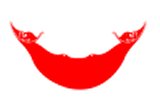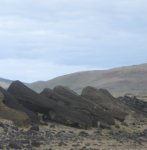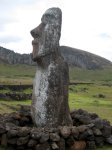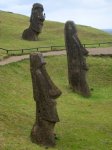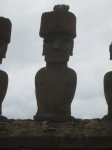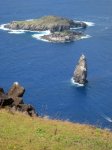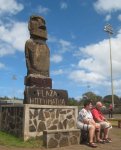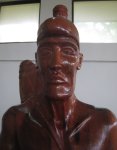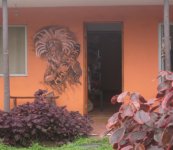Easter Island (Rapa Nui) is a Polynesian island in
the southeastern Pacific Ocean, at the southeastern most point of
the Polynesian Triangle. Easter Island is famous for its 887
extant monumental statues, called moai, created by the early Rapa
Nui people. In 1995, UNESCO named Easter Island a World Heritage
Site, with much of the island protected within Rapa Nui National
Park. Polynesian people settled on Easter Island in the first
millennium AD, and created a thriving culture, as evidenced by
the moai and other artifacts. However, human activity, the
introduction of the Polynesian rat and overpopulation led to
gradual deforestation and extinction of natural resources, which
caused the demise of the Rapa Nui civilization. By the time of
European arrival in 1722, the island's population had dropped to
2,000–3,000 from a high of approximately 15,000 just a
century earlier. In recent times the island has served as a
warning of the cultural and environmental dangers of
exploitation. Diseases carried by European sailors and Peruvian
slave raiding of the 1860s further reduced the Rapa Nui
population, down to 111 in 1877.
Easter Island is one of the most remote inhabited
islands in the world. The nearest inhabited land (50 residents)
is Pitcairn Island 2,075 kilometer away, and the nearest
continental point lies in central Chile, 3,512 kilometer away.
< Back to the index

